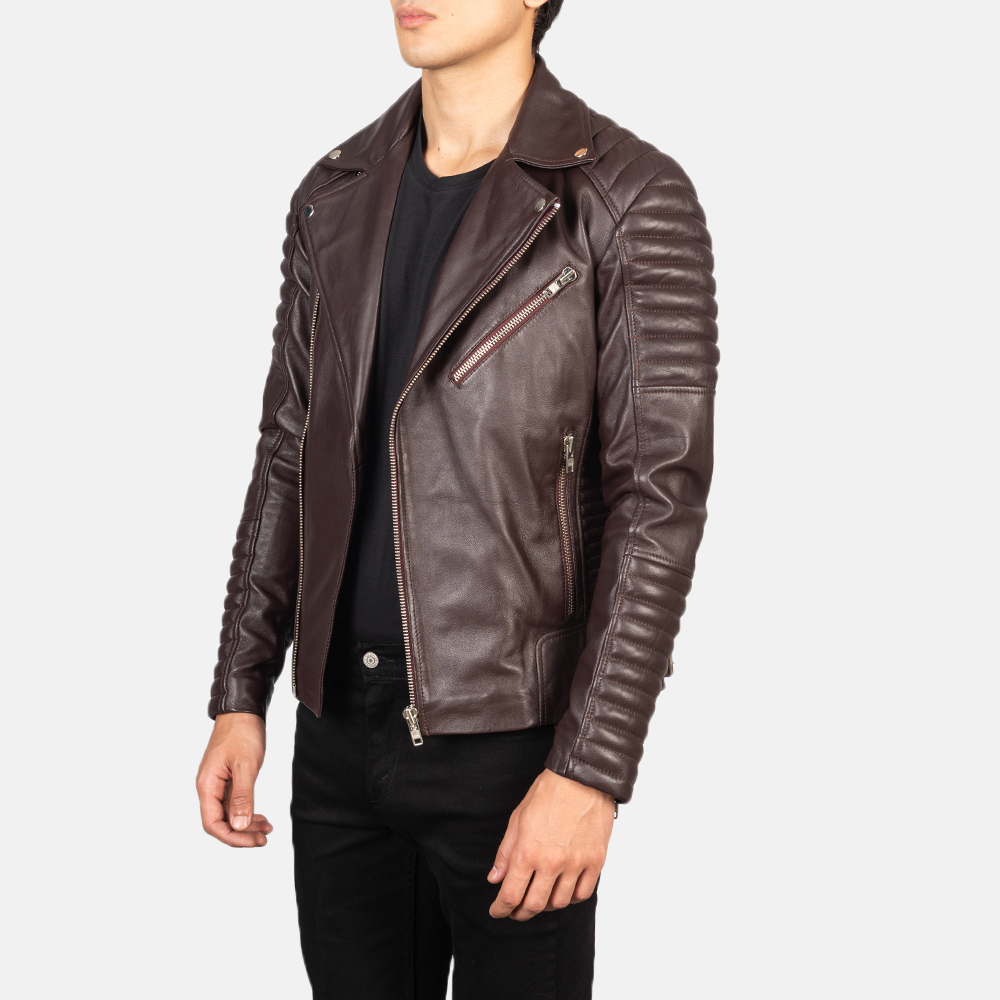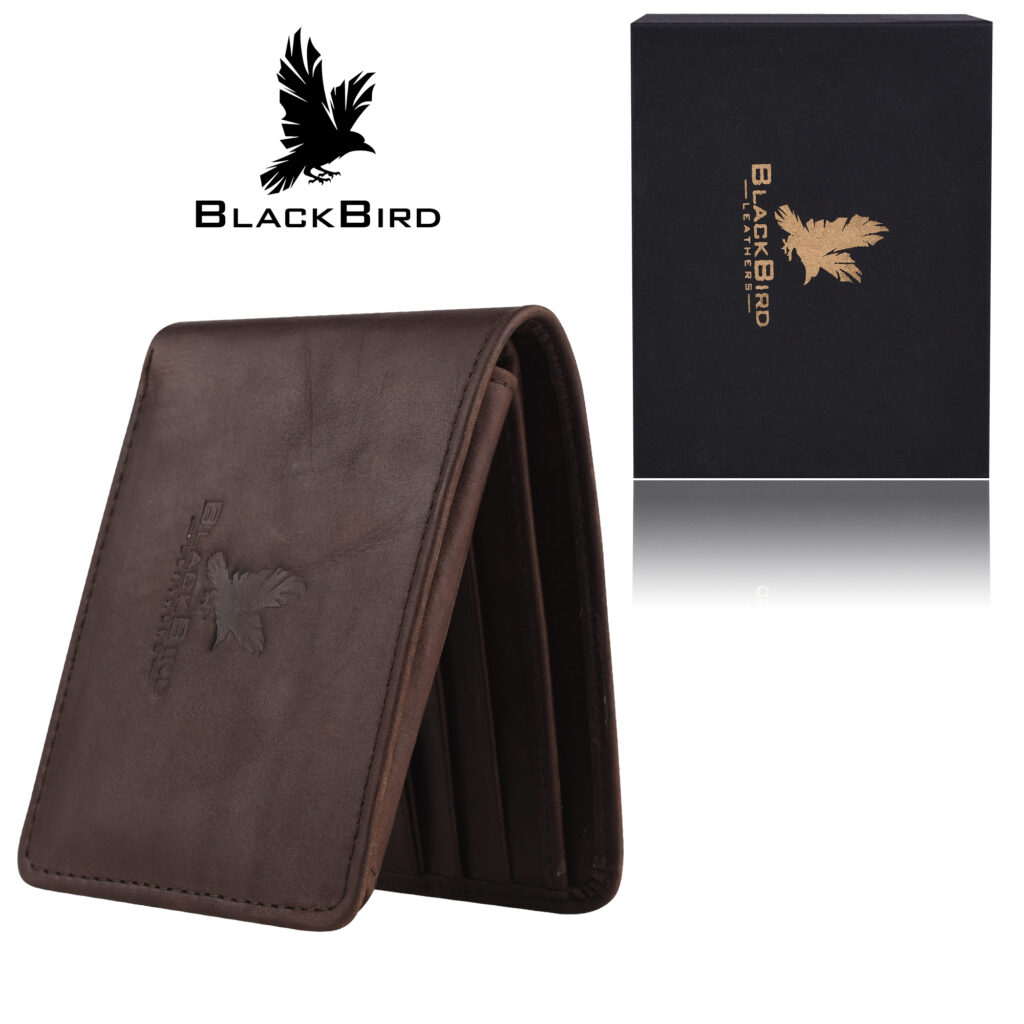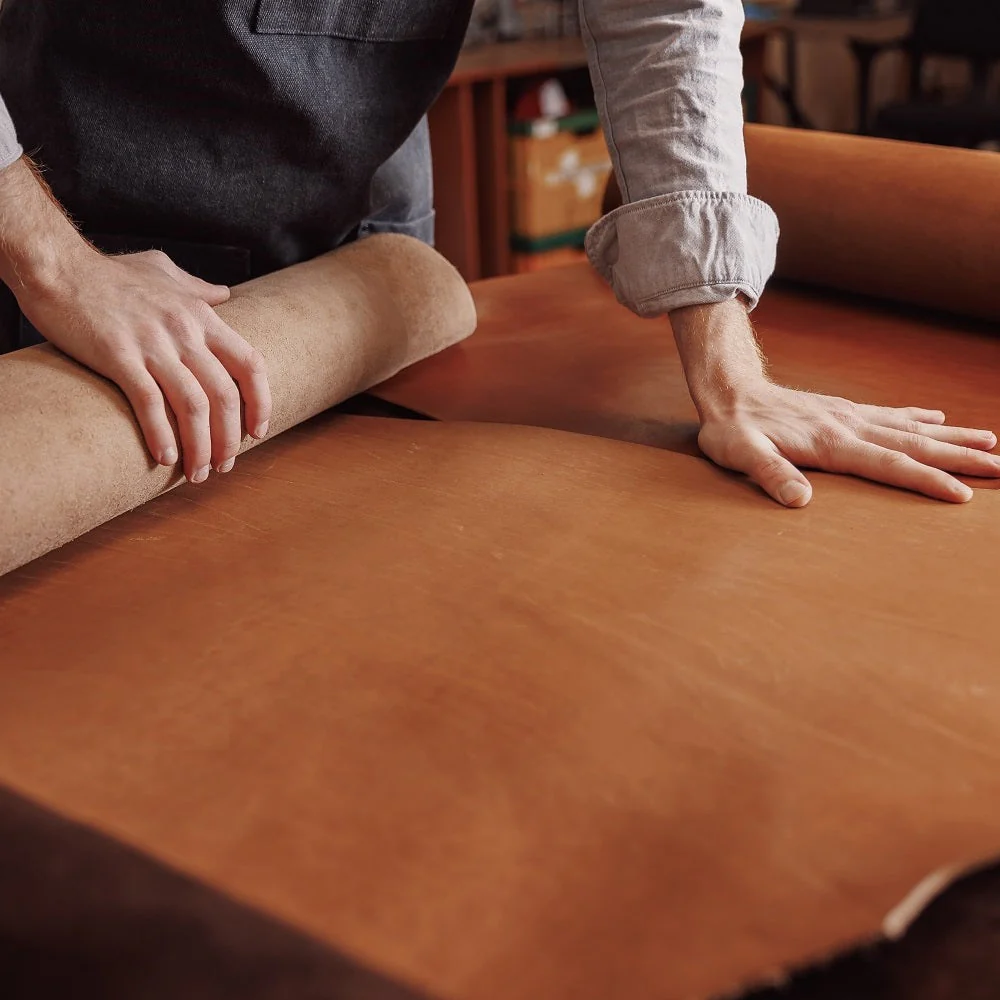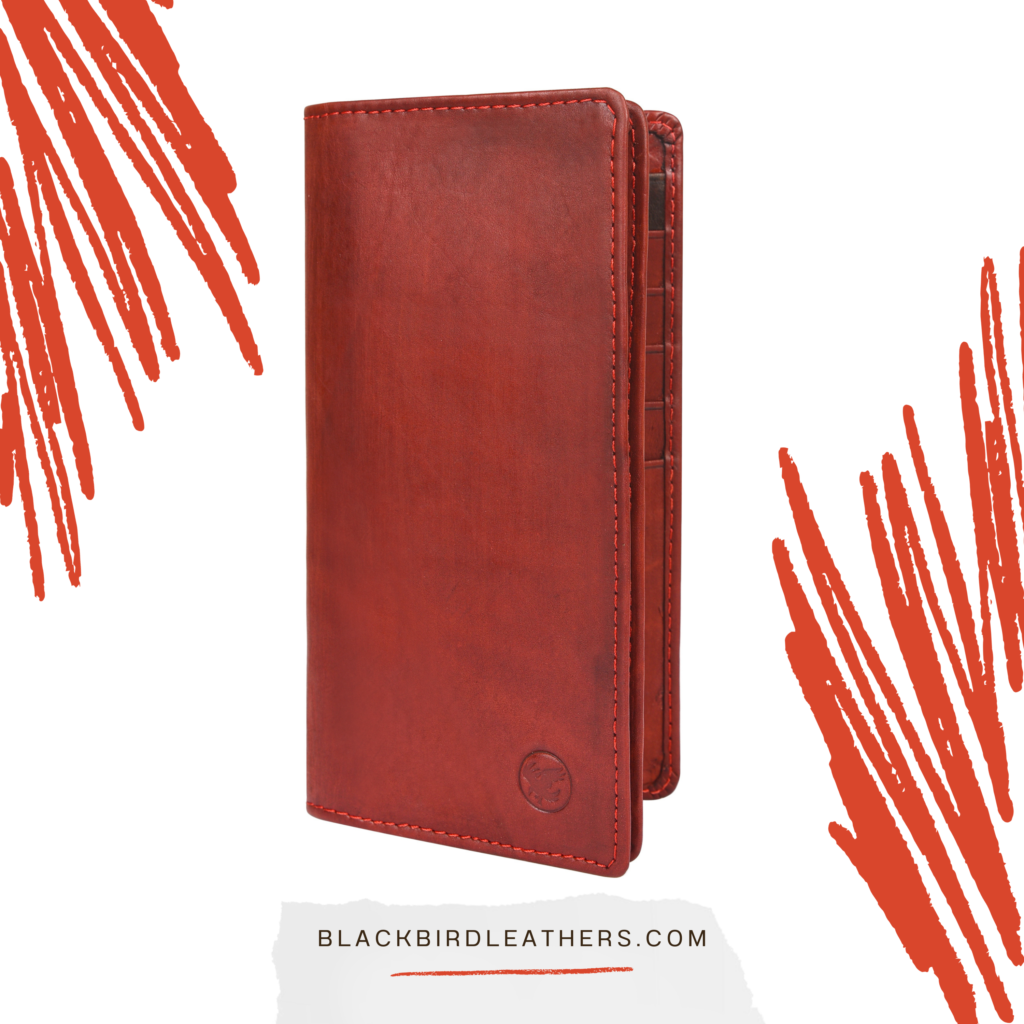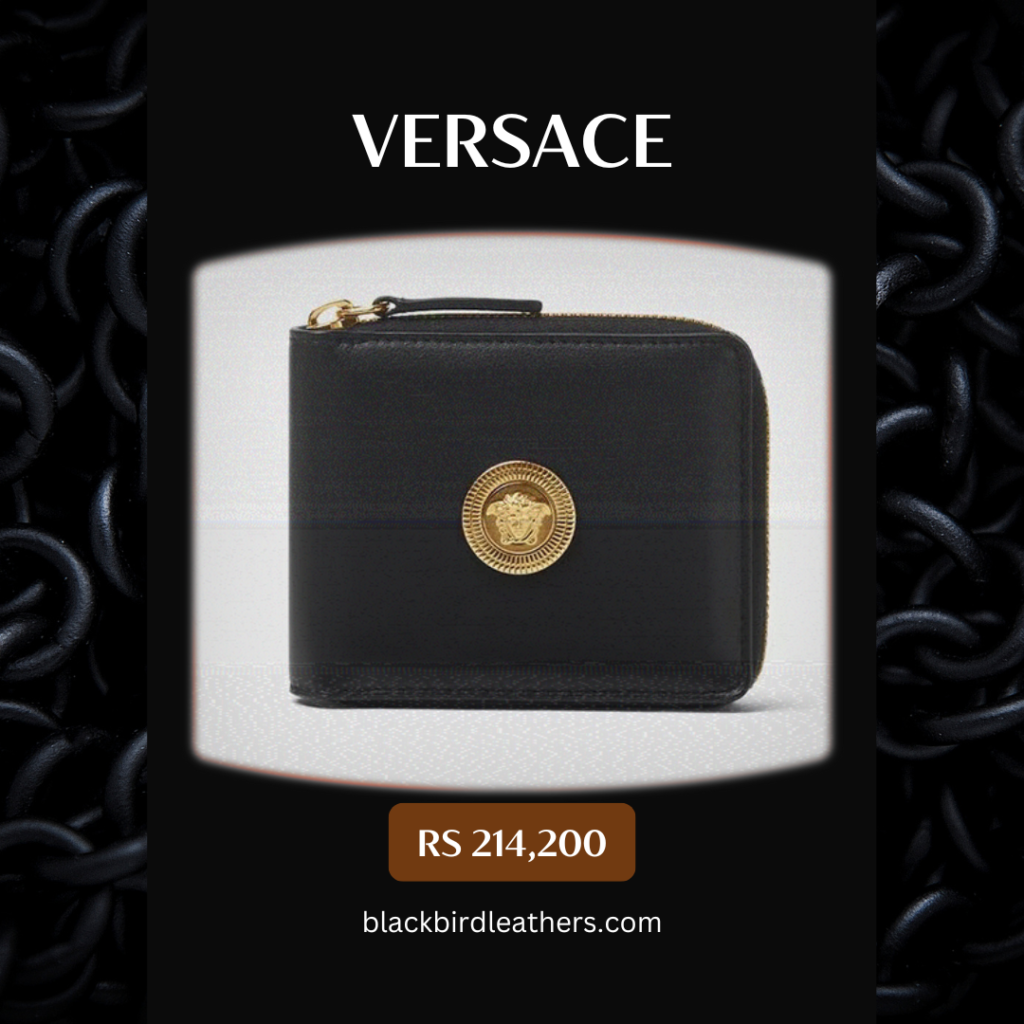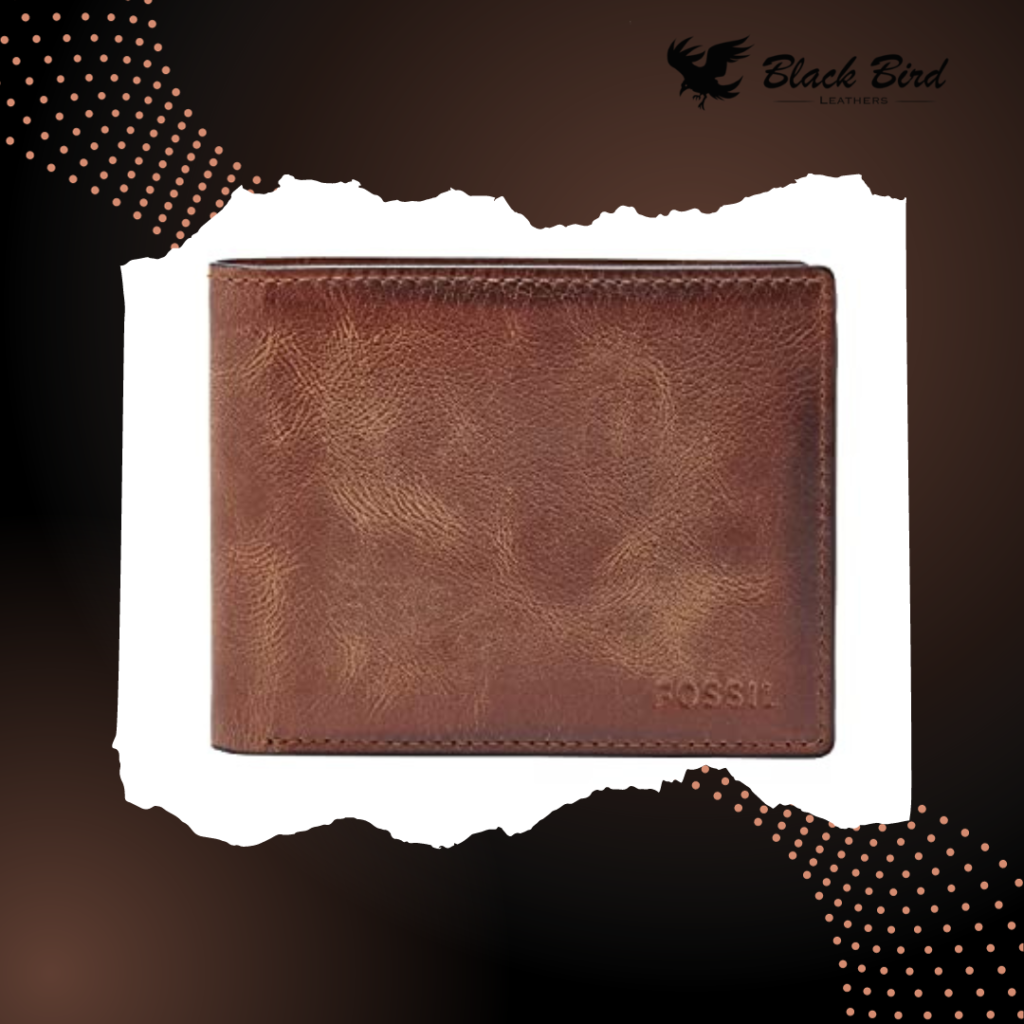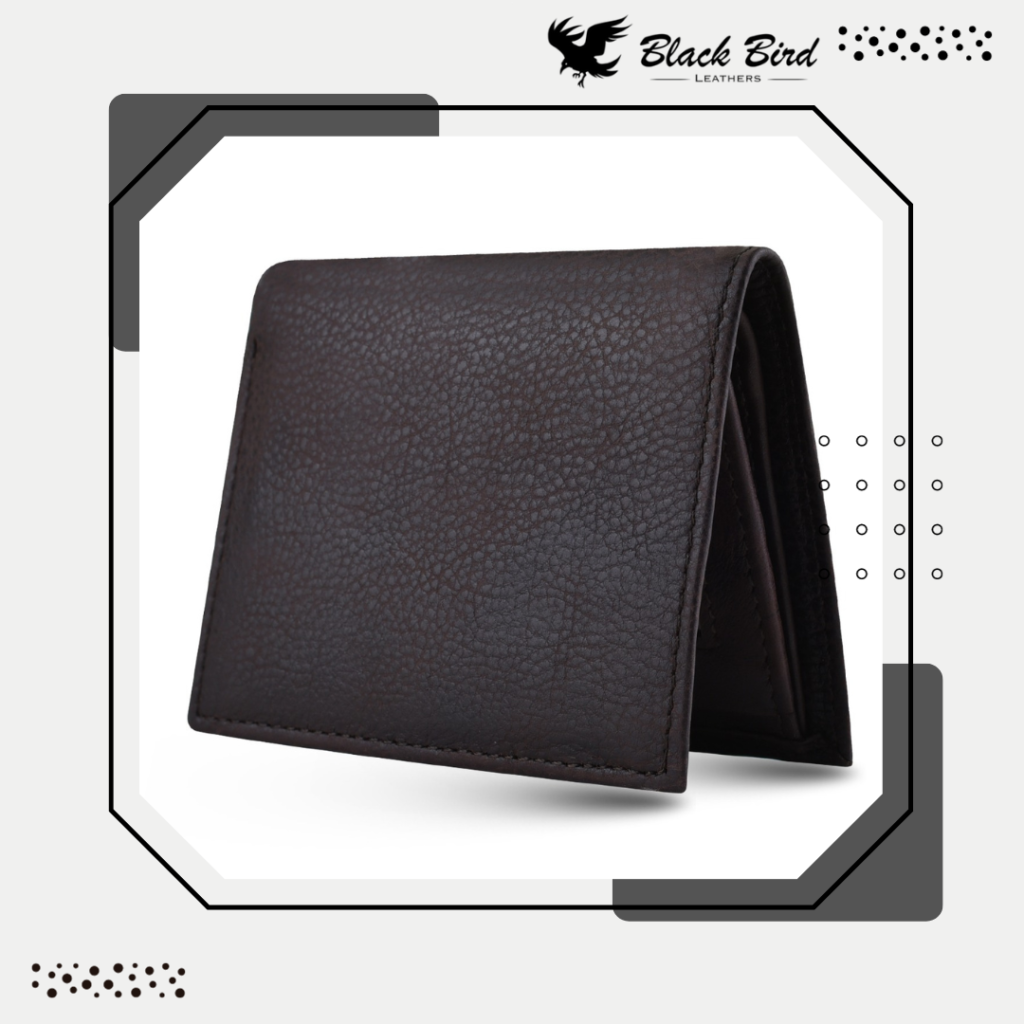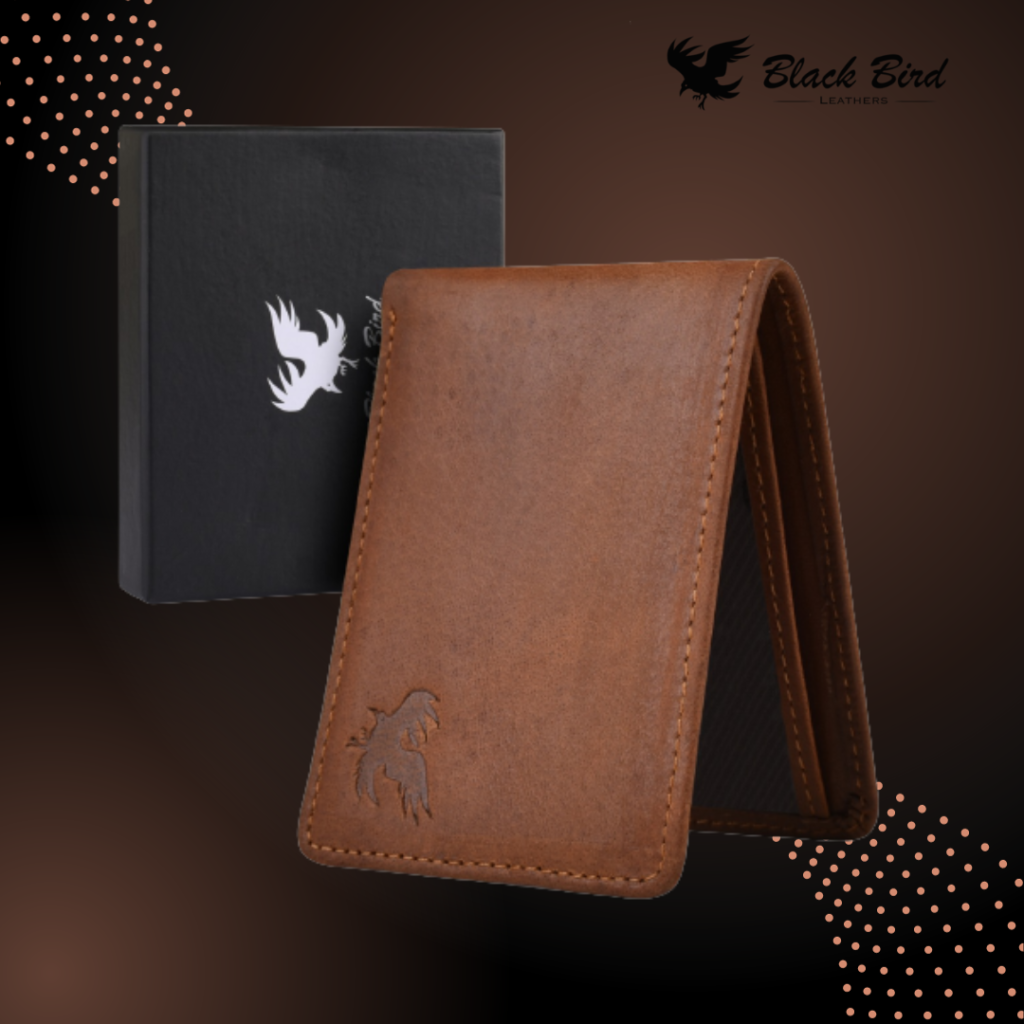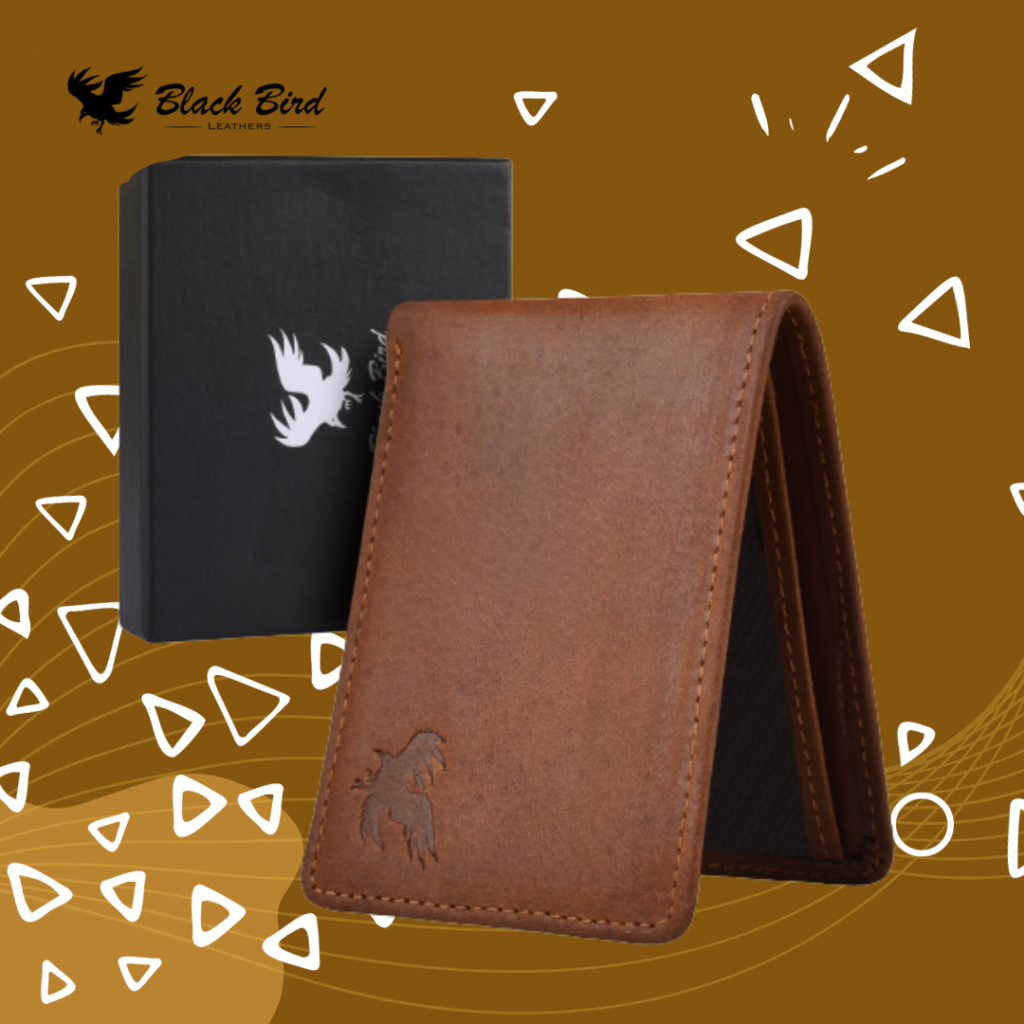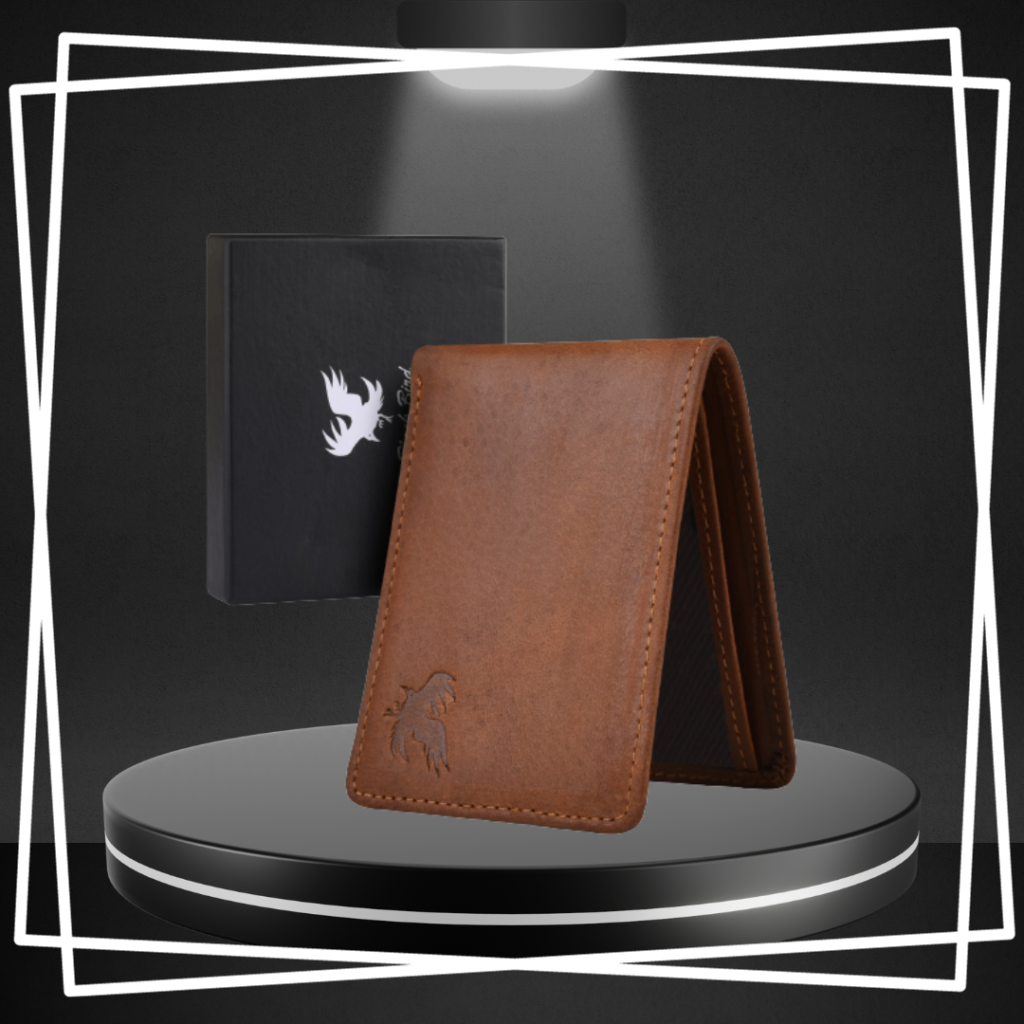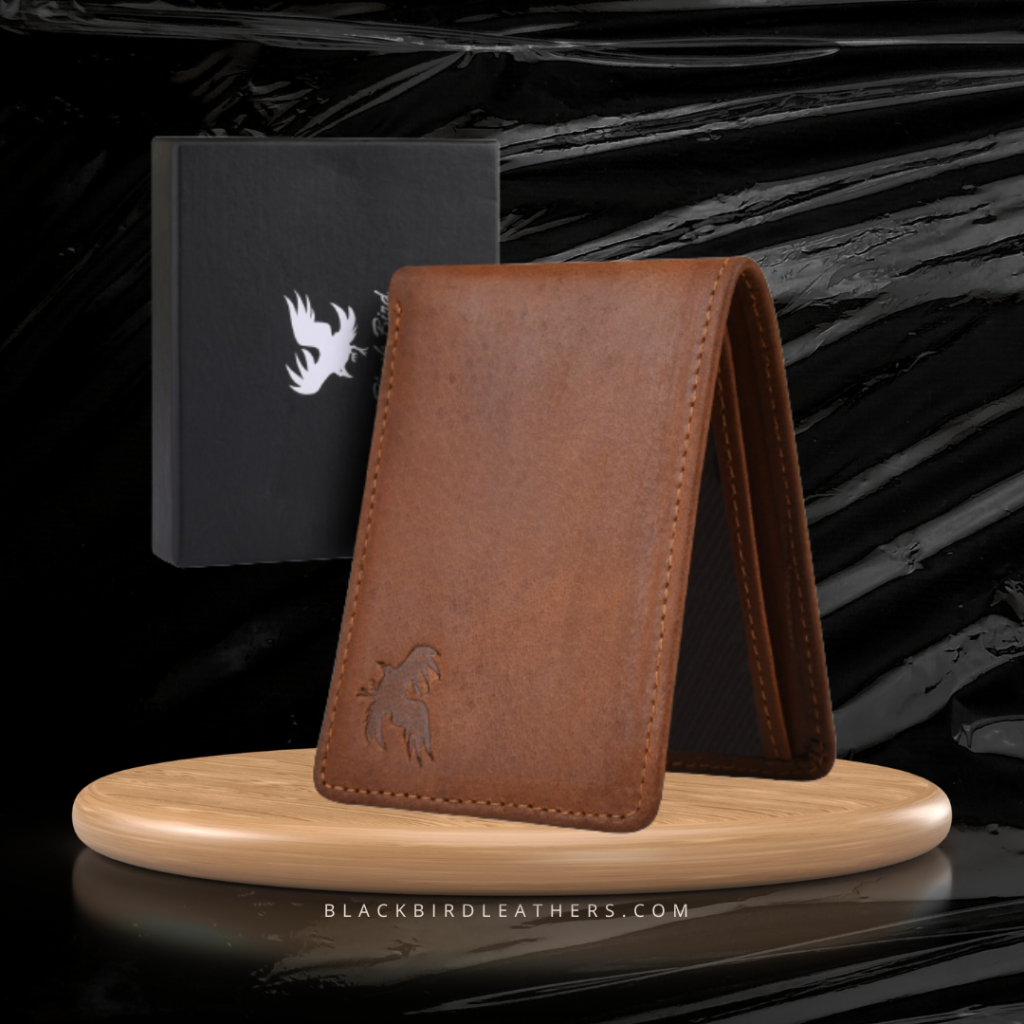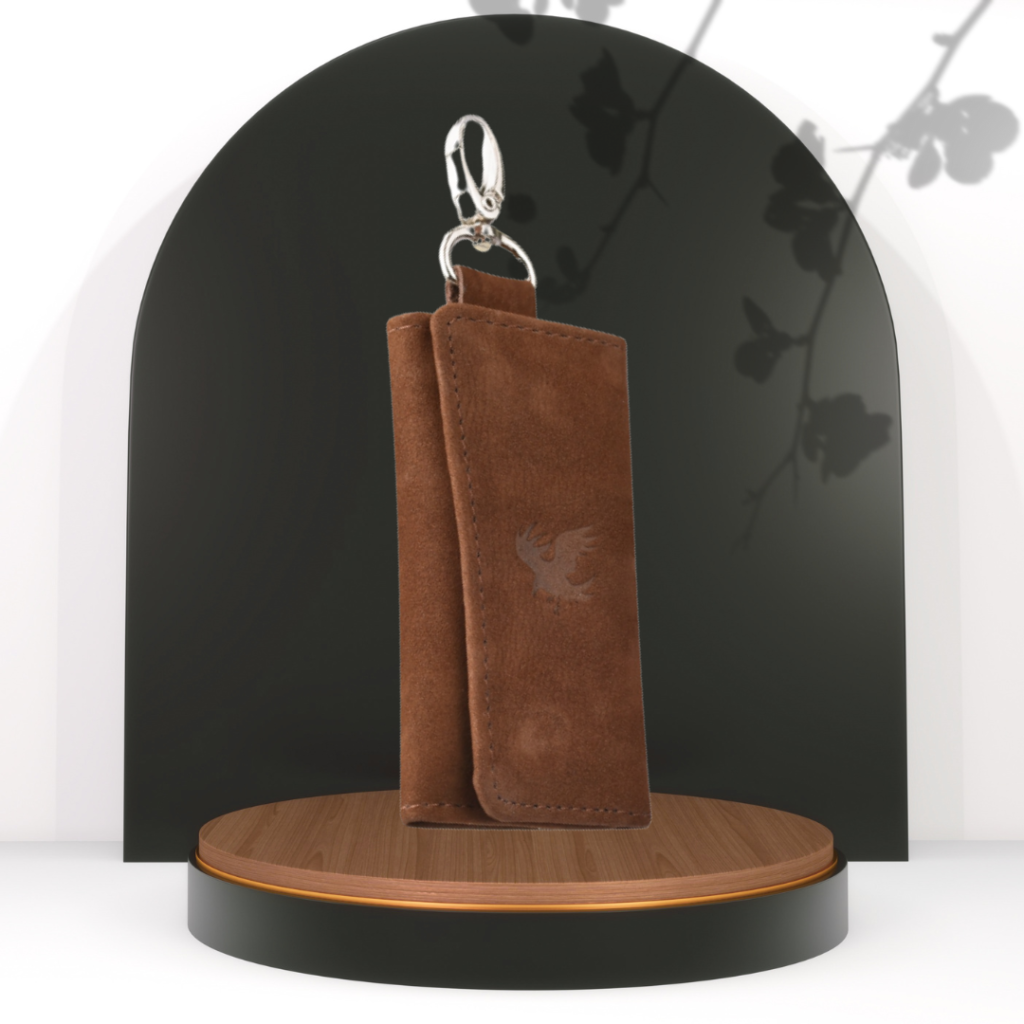Cowhide leather is a representation of strength and grace because of its expansive history and range of uses. One of the most generally used stuff in the leather industry is cowhide leather, Widely used due to its availability and affordability, One kind of leather created from cow skin is called cowhide leather. It is a widely used material for many different products, such as jackets, purses, belts, rugs, and shoes. Each piece has a unique texture that’s gritty and supple, with colorful grain patterns. Due to its unequaled continuity, cowhide leather is an ideal material for numerous products, ranging from tough thrills to traditional leather jackets. At Blackbird Leathers, we delve into the intricacies of this exceptional material, providing you with a comprehensive guide that goes beyond the surface, unlocking the secrets and nuances of cowhide leather.
Cowhide leather is a natural byproduct of the meat industry, contributing to its sustainability. The hides undergo a meticulous tanning process to enhance their durability and quality. This ensures that each cowhide leather product retains its natural charm while standing the test of time. Leather from cowhide is a flexible material that may be utilized to create a variety of goods. Leather is a material that may be used to make many different things, like home décor items, clothes, and accessories. Due to its strength and ability to tolerate a lot of wear and tear, it is well-liked for garments and accessories. Its softness and ability to lend a touch of luxury to any environment make it a popular choice for home design items as well.
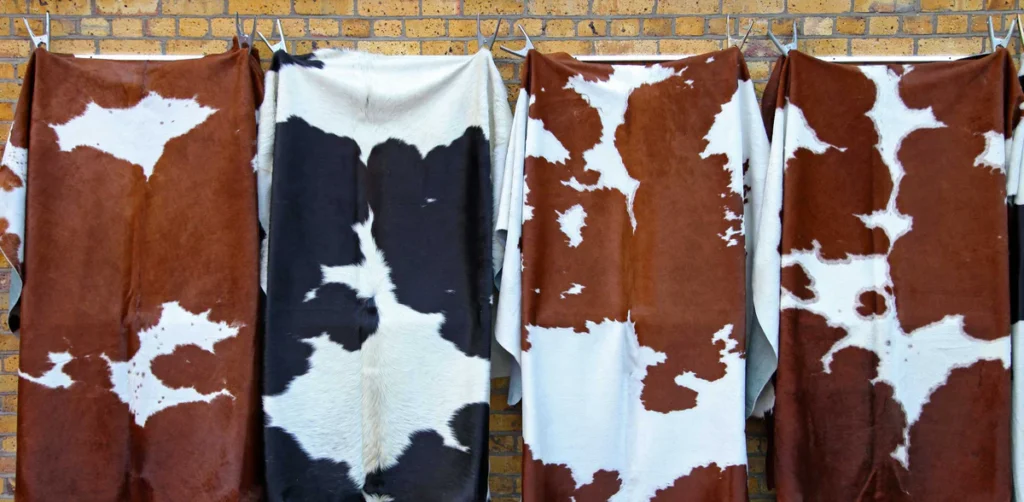
What Is Cowhide Leather?
The natural, unbleached skin of a cow that is hidden beneath its hair is referred to as cowhide. This keeps the animal’s natural colors, which include black, white, and yellow. Additionally, it can be turned into “hair-on” leather, which keeps the fur and can be printed or dyed to create a variety of designs.
How Is Cowhide Leather Made?
The hides of nearly any animal, including crocodiles, sheep, goats, pigs, and cows, can be used to make leather. But the most common kind of leather comes from cowhide. Cowhide is turned into leather by a series of mechanical operations, chemical treatments, and decorative additions.
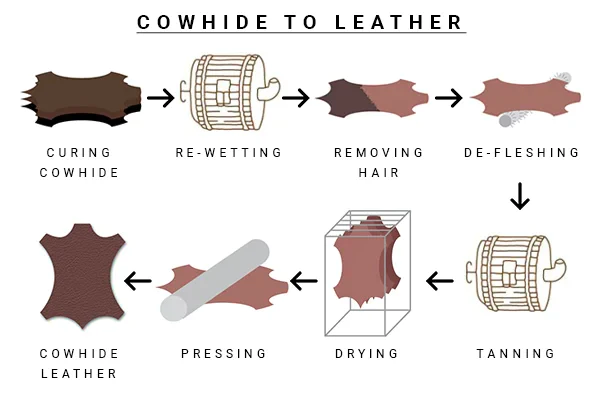
Processing of Cowhide Leather
The cowhide then goes through a series of processes, including washing and soaking, to remove any remaining, superfluous materials, such as blood and lipids. Cowhide is subjected to depilation treatment, which usually involves the use of chemicals or alternative techniques. Chemicals can quickly remove the hair from the hide, but they can also contaminate the environment; there are other, less sophisticated, but less harmful ways to do this.
This primarily entails cutting away incomplete sections of the hide, smoothing the leather, and separating the layer of meat and subcutaneous fat. These processes are automatable. Beyond this, additional actions like dying, polishing, and drying are required to improve its visual appeal and moisture and water resistance. To maintain the product’s quality during these manufacturing phases, careful control over variables like temperature and humidity is required. The production method for cowhide leather involves multiple steps of processing and treatment. Strict control over numerous aspects is required at every stage to generate a high-quality final product.
Types and Grades Of Cow Leather
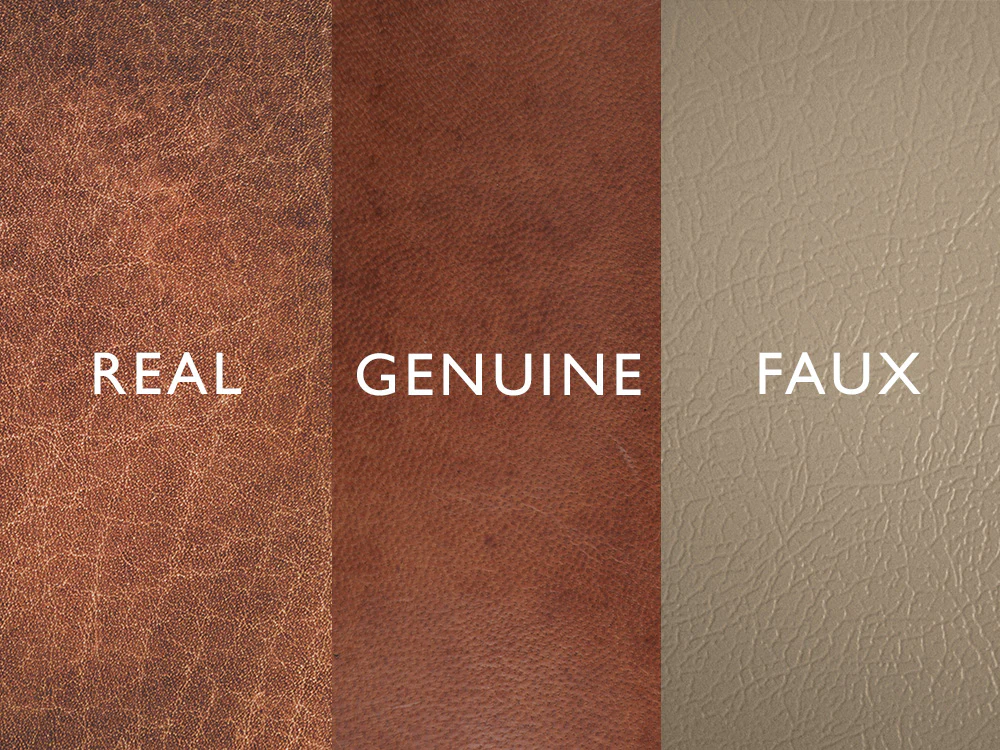
The most widely used type of leather in the world, cowhide, is renowned for its strength, adaptability, and fine finish. The location of the cow from which the hide is sourced and the processing techniques used determine the different types and grades of it.
1. Full Grain Leather
The finest cowhide leather is this one. The term comes from the fact that it is made entirely of the top layer of hide, including all the grain. Each piece of Full Grain Leather is distinct due to the inherent marks and imperfections of the hide. It matures wonderfully and is durable.
2. Top Grain Leather
The second-highest grade, known as Top Grain Leather, comes from the upper back part of the cow. Polishing the hide’s surface eliminates flaws, giving it a more homogeneous look than full grain. While Top Grain Leather is easier to work with and more flexible than Full Grain, it is not as strong.
3. Genuine Leather
Genuine leather, sometimes referred to as “corrected grain” leather, is formed from the layers of the hide that remain after the top is cut off for higher grades. For better looks, it’s frequently embossed, colored, and treated.
4. Split Leather
The lower layers of the hide that remain after the upper layers are split off are used to make split leather. Though less robust and without the natural grains, it is less expensive than superior grades.
5. Bonded Leather
Scraps of hide are bonded together using adhesive to create Bonded Leather, the lowest grade of leather. It is the least expensive kind of leather, but it is also less resilient and ages poorly.
Finishing Methods of Leather
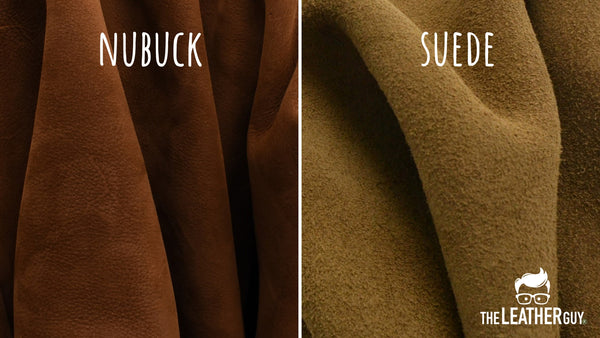
The quality and look of the finished product are also influenced by various finishing methods in addition to these grades. They consist of:
Aniline Leather: This leather is colored using soluble dyes; no insoluble pigments or topcoat paint is applied to the surface. It permits the leather to maintain its organic surface with the same “grain” as animal skin.
Semi-Aniline Leather: To get a consistent hue, this leather is dyed in a drum. Then, to increase the surface’s resilience without removing the leather’s inherent “grains,” a small quantity of pigment is applied.
Nubuck Leather: This is top-grain cow leather that has undergone slight napping of small protein fibers due to sanding or buffing on the grain side, giving the surface a velvety appearance.
What are the Pros and cons of cowhide leather?
Pros of Cowhide Leather:
- Versatility: Cow leather has a wide range of applications and can be utilized to make shoes, clothing, furniture, and accessories.
- Durability: Cowhide leather goods are known for their flexibility and resilience, which allow them to resist degradation over time.
- Variety: It is available in several forms, each with special qualities, such as bison, authentic cowhide, buffalo, and cow.
- Resilience: Cowhide leather with hair on the surface functions as a barrier to increase water resistance. It is also readily maintained because it can be thoroughly washed with a variety of soaps and water.
- Comfort: Cowhide leather is supple and gets softer with usage, despite its rough exterior.
Cons of Cowhide Leather:
- Breathability: Since cowhide leather is less breathable than faux leather, it may irritate the skin.
- Maintenance: Cowhide leather needs constant attention to preserve its quality and look, even with its many advantages.
- Price: Cowhide leather comes in a variety of price points.
- Special Techniques: When processing and caring for leather with hair on cowhide, different methods may be needed.
- Ethical Concerns: Using animal products may raise ethical questions for some customers. Even though leather is a byproduct of the livestock business, these worries may still affect what people decide to buy.
- Limited hues: Cowhide leather has a smaller selection of natural hues than synthetic materials. The texture and durability of leather may be impacted by the dyeing process, despite its potential.
Uses of Cow Leather – Popular Leather Products
Cowhide leather is a flexible material that finds application in a variety of items because of its strength, resilience, and visual appeal. These are a few of the most well-liked items made of cowhide leather:
Fashion Accessories: Handbags, wallets, and belts are just a few examples of accessories made from cowhide leather. Cowhide is a great material for these things because of its elegance and durability.
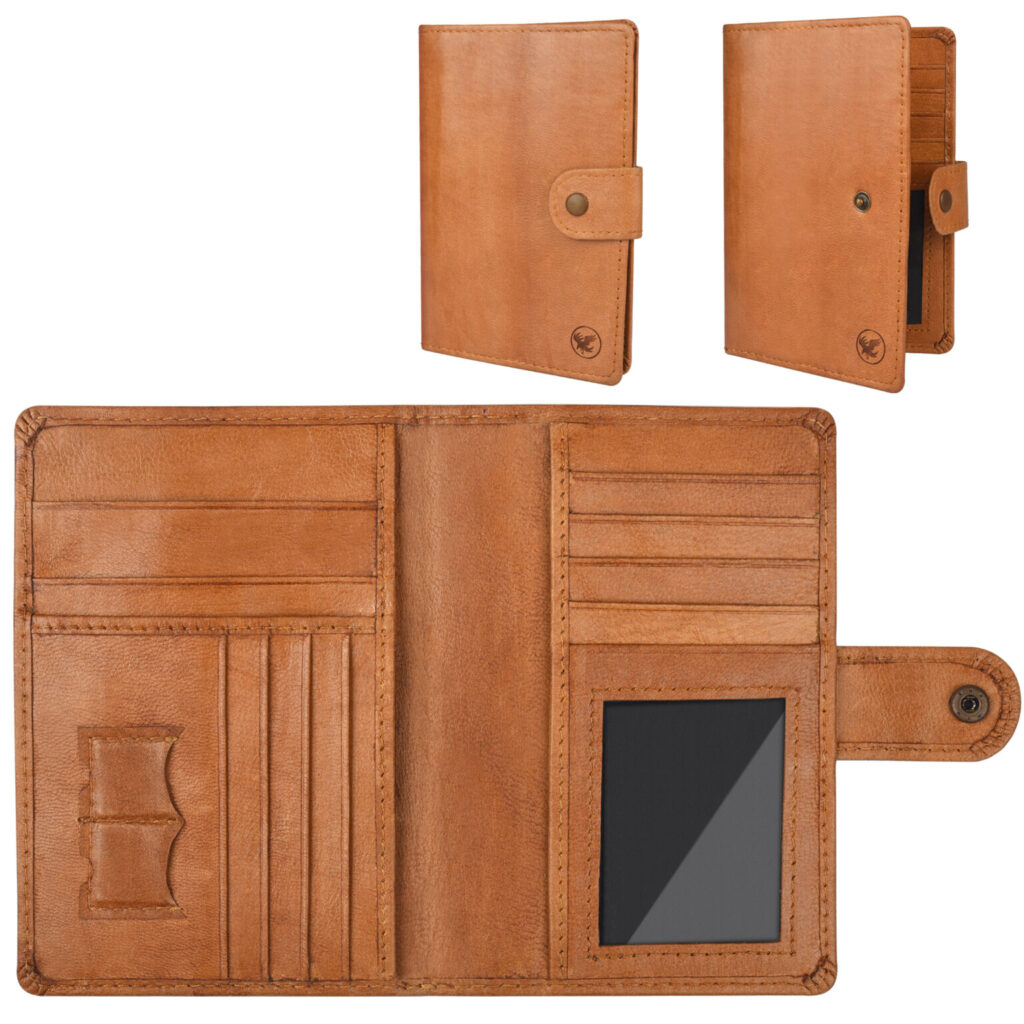
Executive Leather Passport Holder | Brown
Footwear: Due to its comfort and durability, cow leather is a favorite material for both formal and casual boots.
Furnishings: Cow leather is also used to cover the upholstery of chairs, couches, and ottomans. It is resistant to normal wear and tear and has a rich, luxurious appearance.
Clothes: Cowhide skirts, pants, and jackets are popular because they are long-lasting and stylish.
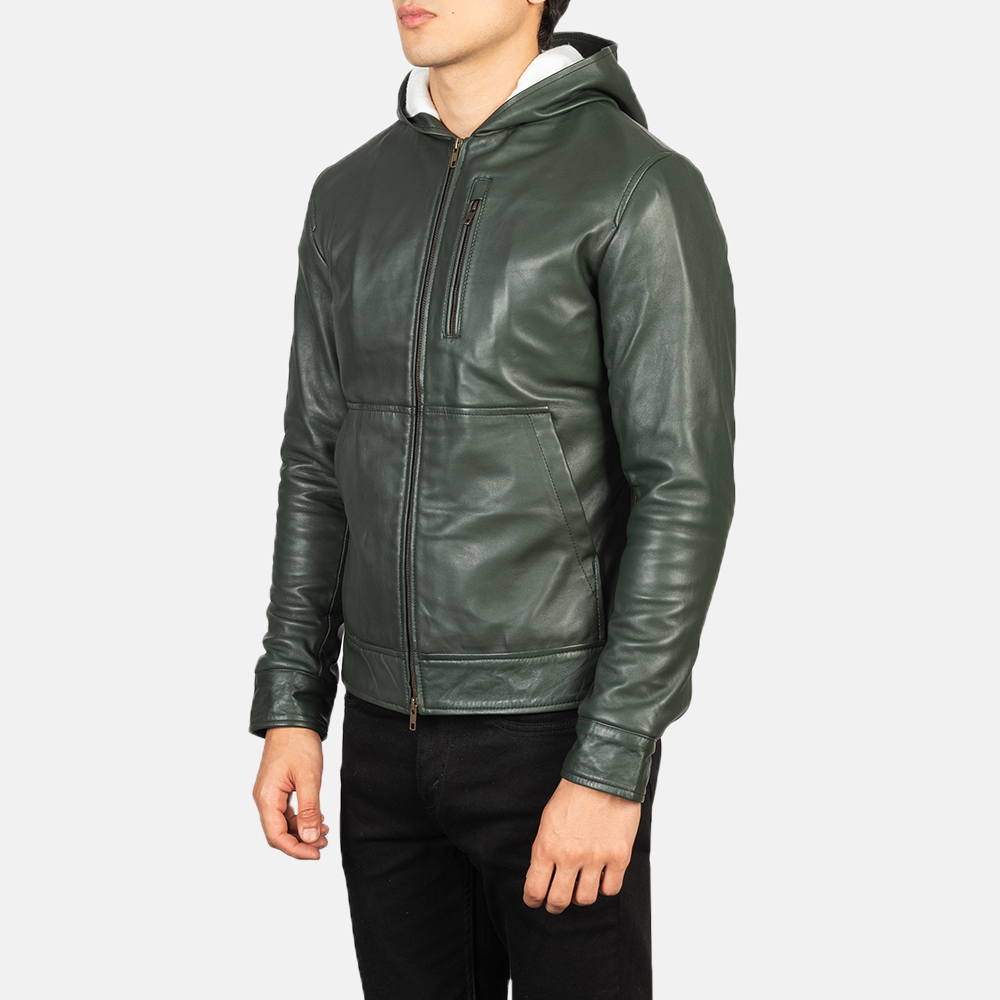
Olive Green | Leather Jacket Hoodie | Men
Automobile Interiors: Because of its feel, toughness, and luxurious appearance, cowhide leather upholstery is frequently used inside high-end vehicles.
Bookbinding: For a traditional, ageless look, the binding of some expensive or antique books is made of cow leather.
Musical Instruments: Cowhide leather is used for wind instruments and drum heads because of its durability.
Sports goods: Because cowhide leather is flexible and durable, it is utilized in sports products including baseball gloves, boxing gloves, and balls.
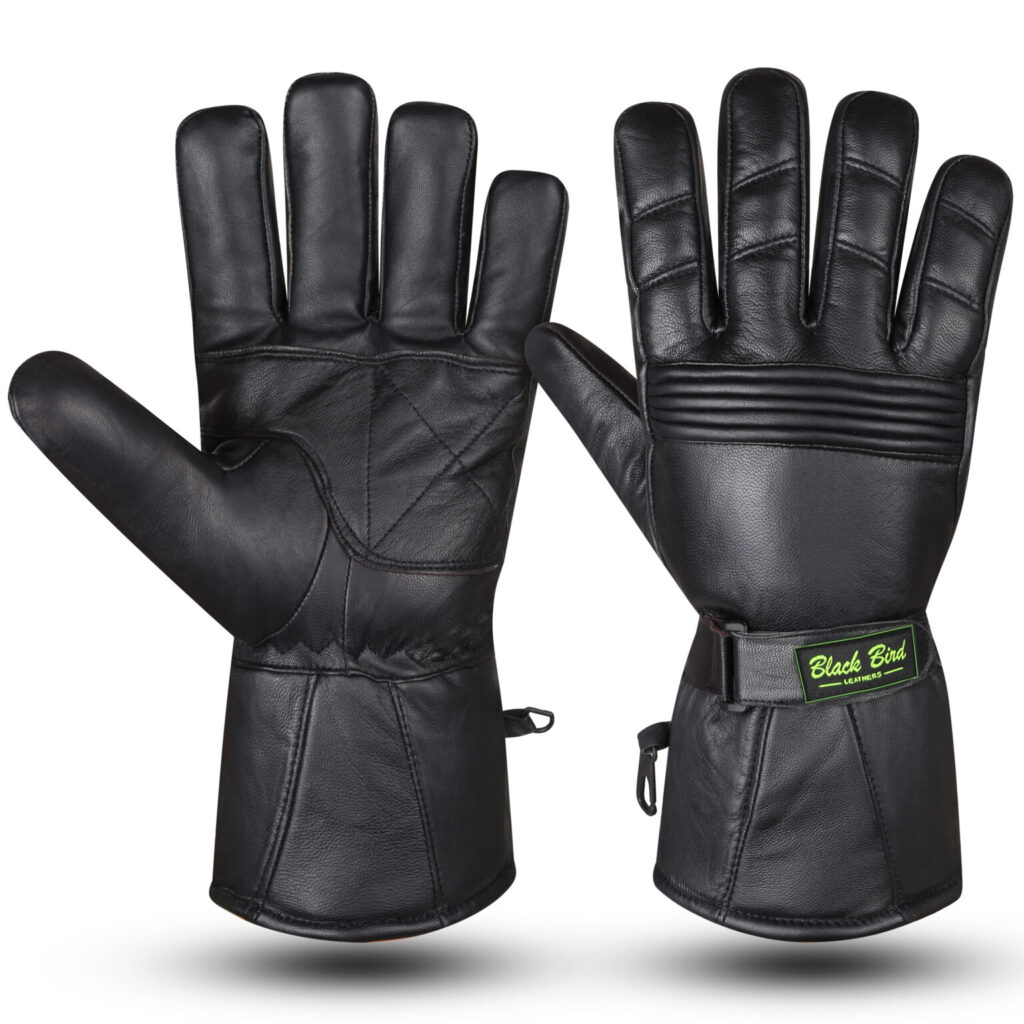
Premium Sheepskin Motorbike Leather Gloves
Jewelry: Handmade, rustic jewelry can also be crafted from cowhide leather.
Cowhide leather goods are strong and fashionable, but to keep them looking their best, they need to be regularly cared for.
What is the Difference Between Cowhide Leather and Other Types of Leather
There are many different manners in which cowhide leather varies from other kinds of leather. To begin with, cowhide leather is created from the unbleached, natural skin and hair of cows, which are then tanned to produce leather. When compared to other varieties of leather like sheepskin, goatskin, and lambskin, this makes it much stronger and less flexible. It does, however, have superior insulating qualities and is heavier.
Additionally, the most popular and easily accessible kind of leather—a byproduct of the meat industry—is cowhide leather. It is easily dyed and stamped to look like other leathers. Its adaptability makes it perfect for a variety of products, including furniture, car upholstery, wallets, and shoes. However, even if they are as authentic, other leathers like sheepskin, goatskin, and lambskin might not be as strong or adaptable as cowhide leather. They might also cost more and be harder to find.
Let’s make a distinction between cowhide and other leather varieties, such as sheepskin, pigskin, and faux leather.
Faux Leather:
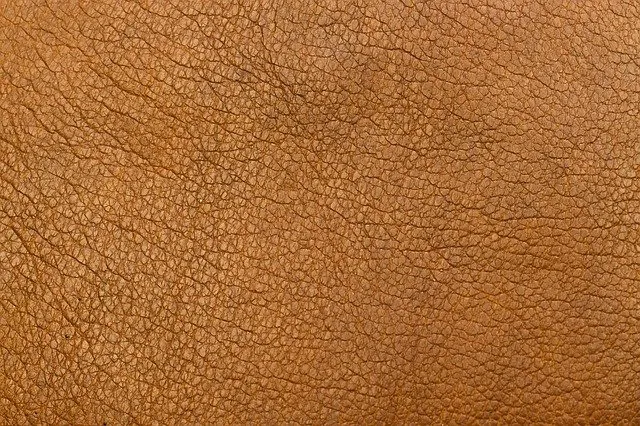
Animal skin that has been peeled is chemically treated to create genuine leather. In contrast, synthetic cloth is chemically treated to create faux leather, which is mostly made of PU and PVC. The basic components utilized to make the two different.
Sheepskin Leather:
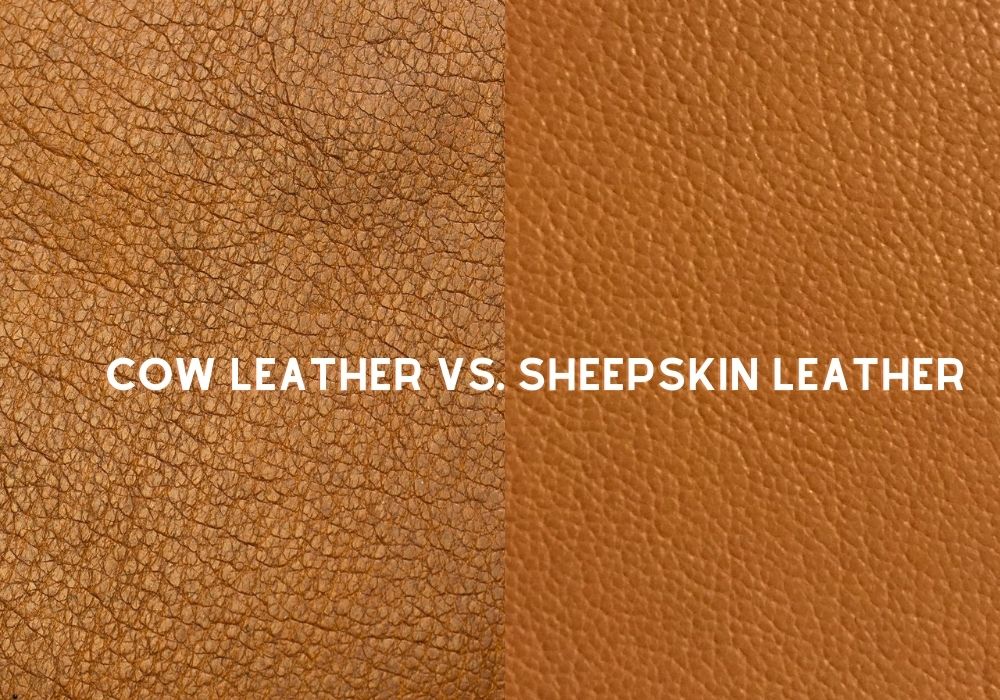
Goat leather is exceptionally supple and stretchy, with a stronger fiber structure. It has a strong sense of genuineness and is thinner and more delicate than cowhide, with distinct surface textures. Sheepskin hair bundles contain more perspiration and sebaceous glands than goat leather, despite their similarities. The finished product feels velvety to the touch and is incredibly soft with great extensibility. But because of its decreased strength and decay resistance, it is only appropriate for gloves and leather clothing—handbags and shoes shouldn’t be made of it.
Pigskin Leather:
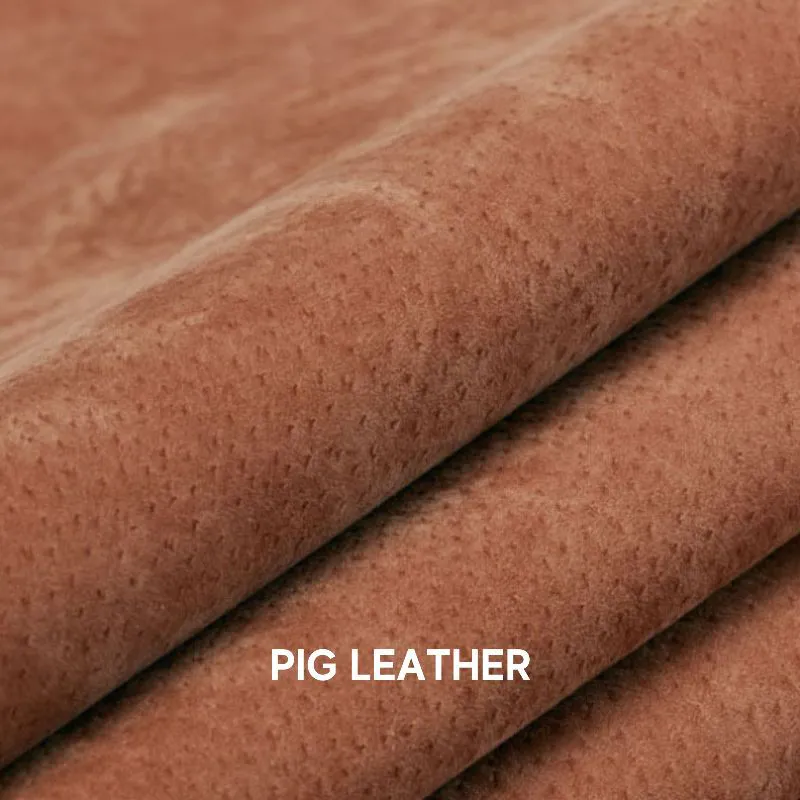
Compared to cowhide, pigskin is more breathable and absorbs moisture better because the bristles of the pig reach the skin’s inner layer. It is less aesthetically pleasant than cowhide, nevertheless, because of the wide pores that produce a “品” shape and the rough texture of the leather. To address these issues, further processing is needed.
How to Spot Fake Leather?
Conduct a Combustion Test
Igniting it is the most straightforward approach. Burning leather releases an odor that is very similar to that of singed hair. You can use your fingers to crumble it into powder once it has burned. Conversely, when burned, synthetic leather releases an offensive odor and lumps after burning.
Visual Examination
The primary method of determining the type of leather and its grain is visual inspection. When looking closely, it is possible to see that the leather’s surface has noticeable patterns and pores. Moreover, the back of synthetic leather contains a backing layer made of fabric that is intended to increase its tensile strength, whereas real leather does not have this layer. This is the easiest and most useful way to identify someone.
Texture Analysis
If the surface of the leather feels elastic, plump, soft, and smooth to the touch, it is real. Synthetic leather is not very resilient and feels like plastic. The wrinkles are about the same thickness when bent. Cowhide is thicker and firmer than other leathers, with a full-grain surface, tiny pores that are evenly and densely dispersed, and a stronger hide that feels springy and robust on the touch.
Olfactory Test
Natural leather smells strongly of fur. Synthetic leather items smell like plastic and don’t have any fur scent at all, yet the scent is still very noticeable even after processing.
Label Verification
Examining the label is the most effective way to start figuring out whether a product is made of genuine leather. The product is not made of real leather if the terms “polyester” or “synthetic” are included on the label.
How do you maintain and clean cowhide leather?
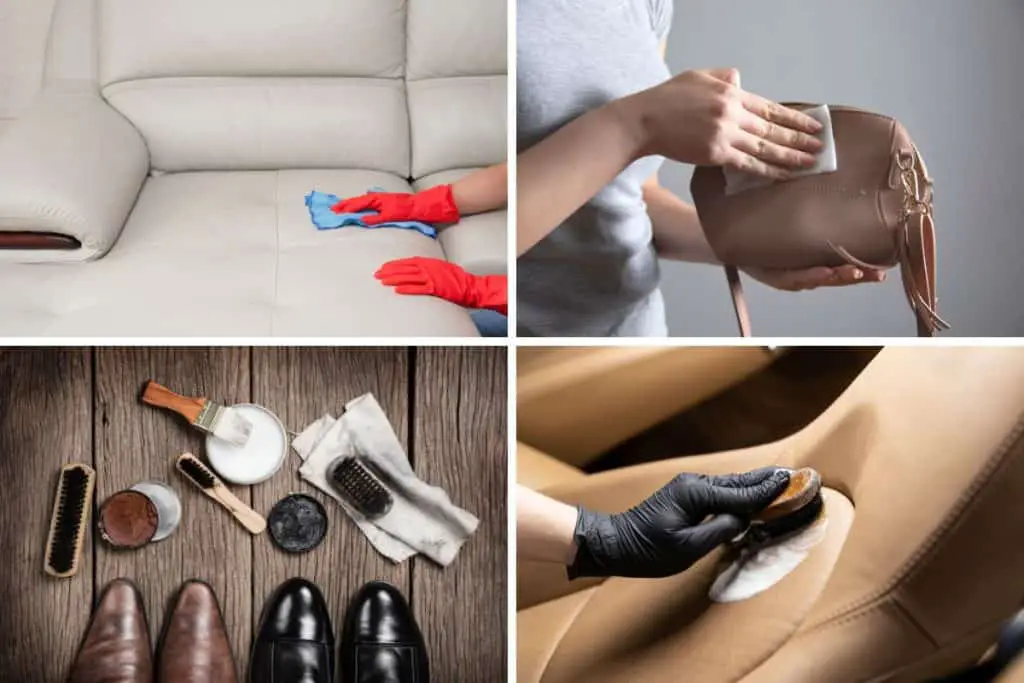
A few steps are involved in maintaining and cleaning cowhide leather.
- Initially, dust and loose particles can be effectively removed with routine vacuuming or dusting.
- Make sure not to soak the hide when steam-pressing cowhide leather; instead, use a damp cloth between the hide and the iron.
- Steer clear of abrasive equipment and strong chemicals for cleaning as they may cause harm to the leather.
- Instead, use a solution of water and mild detergent for small spots.
- When dealing with grease stains, use a small amount of eucalyptus oil and carefully scrape off the grease.
- The leather may dry up and fracture if it is exposed to extreme heat, sunshine, or other environmental factors.
- Finally, frequent conditioning can aid in preserving the appearance and texture of the leather. Seek professional cleaning if a stain is particularly difficult to remove.
- Note that cowhide leather should not be exposed to moisture or extreme heat. You must abide by these rules to preserve the longevity and quality of your cowhide leather.
Popular Cowhide Leather Products Brands
Blackbird Leathers
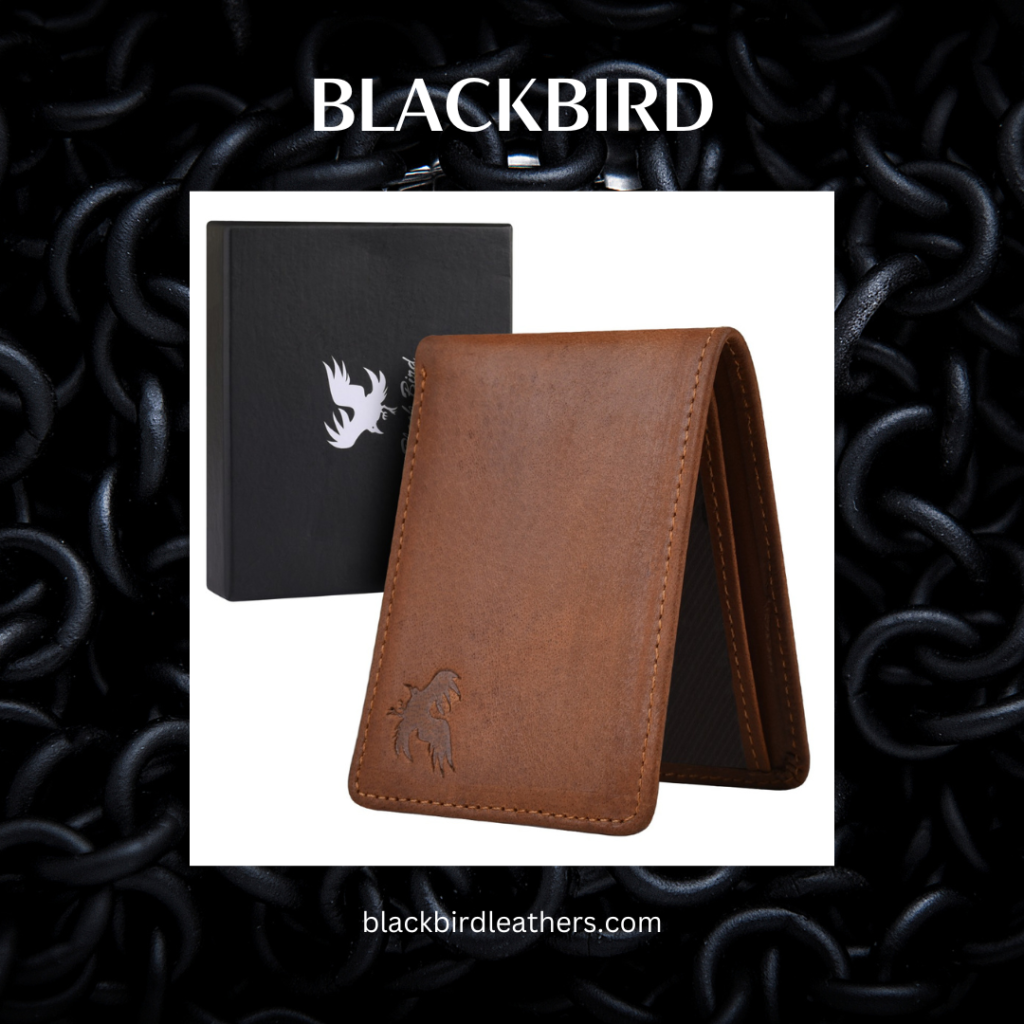
If the premium leather’s craftsmanship at a reasonable price captivates your attention, and if the leather’s smooth, opulent texture calls out to you. The best leather brand out there is Blackbird Leathers. Still, it’s a well-known and among the greatest leather brands available to men. Essential components of a range of handcrafted, natural men’s leather wallets, accessories, and other distinctive products include deft craftsmanship, the aroma of pure leather, modern style, spaciousness, and elegance. To ensure the lifespan of the wallet and all other products, every wallet is also handmade. Blackbird is proud to employ environmentally responsible practices, reduce its carbon impact, and use goods that originate responsibly.
Mont Blanc
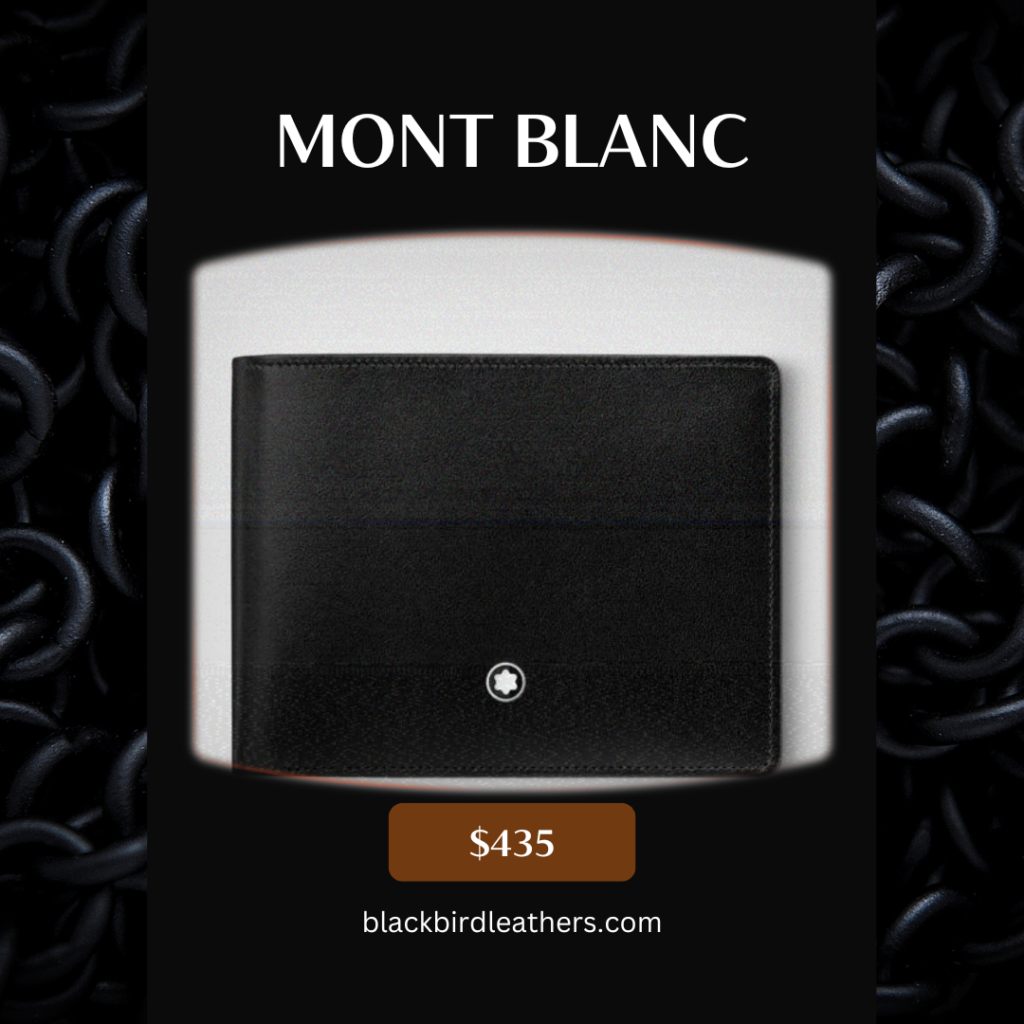
Montblanc International is another big and prestigious name in luxury leather goods. It is a German manufacturing company of luxury goods, based in Hamburg. Montblanc is a producer of a wide range of products, including goods for travel, writing implements, watches and jewelry, and wallets among other products. Their wallet prices are exorbitant but they last longer than expected. They have more designs and styles than one could ever go through so there’s always something for everyone.
Giorgio Armani
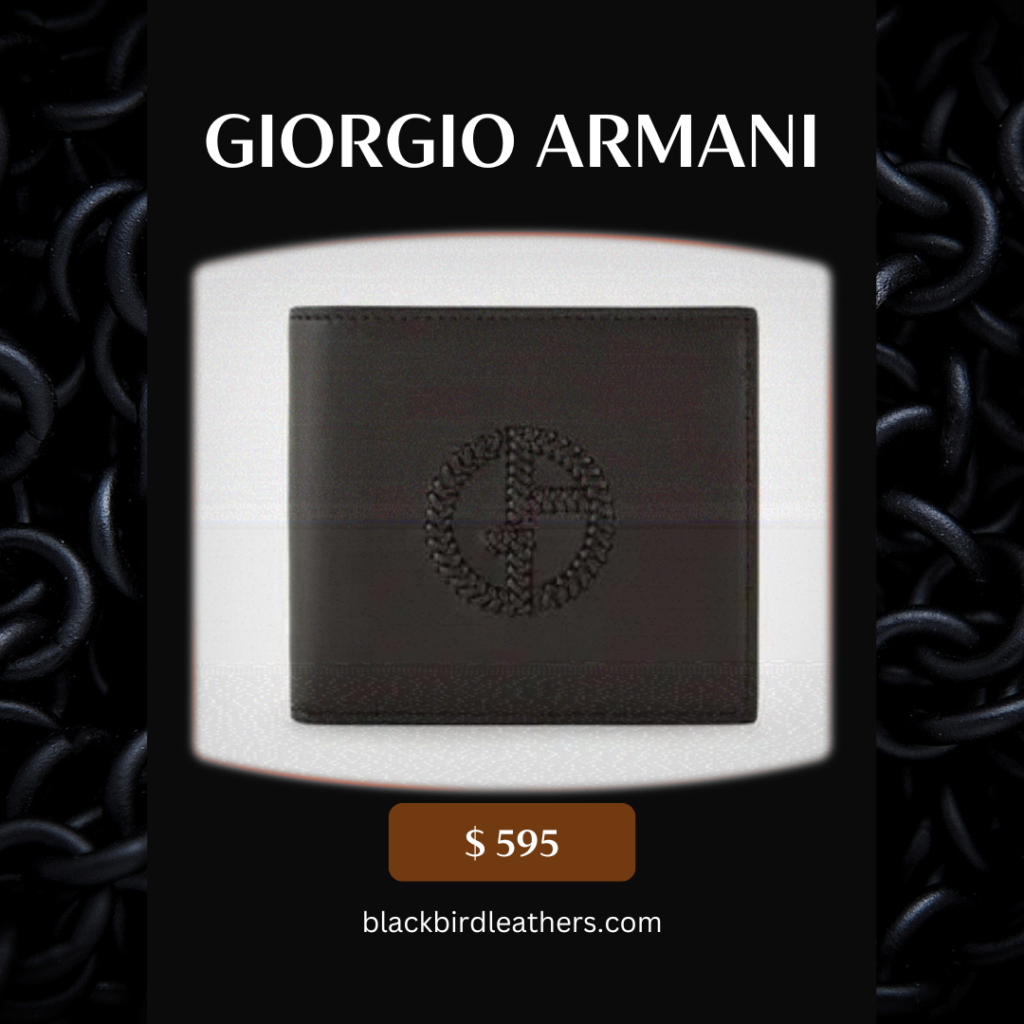
Almost everyone who is obsessed with fashion is aware of the Italian wallet brand Giorgio Armani, which was named after the famous fashion designer Giorgio Armani. Giorgio Armani is one of the most recognizable names in luxury fashion today. But elegant, fashionable, and long-lasting wallets come from high-end designers. Years of use haven’t affected their designs in the slightest.
Final Thoughts
As my exploration of the world of cowhide leather concludes, I cordially encourage you to delve deeper into the countless opportunities that this extraordinary material presents. From its humble beginnings as cattle skins to the sophisticated goods that adorn our lives, cowhide leather is proof of the timeless appeal of superb craftsmanship. Beyond its functional uses, cowhide leather embodies the ideal balance of strength, durability, and visual appeal. With the help of this guide, I hope you will be able to recognize and choose cowhide leather goods with confidence. Discover the unmatched beauty and practicality cowhide leather adds to your lifestyle—we at Blackbird Leathers, celebrate the ageless charm of cowhide leather. Visit Blackbird Leathers Store!
FAQs
Q: Is cowhide leather sustainable?
Absolutely. Cowhide leather is a byproduct of the meat industry, ensuring a sustainable use of resources.
Q: How do I maintain the quality of my cowhide leather products?
Regular cleaning with a damp cloth and conditioning with a suitable leather conditioner will keep your cowhide leather products in top-notch condition.
Q: Are the wrinkles and scars on cowhide leather a disadvantage?
No, they contribute to the unique character of each piece, enhancing its authenticity.
Q: Which type of cowhide leather is best for aging beautifully?
Full-grain leather ages beautifully, developing a unique patina over time, making it the preferred choice for those seeking timeless elegance.


